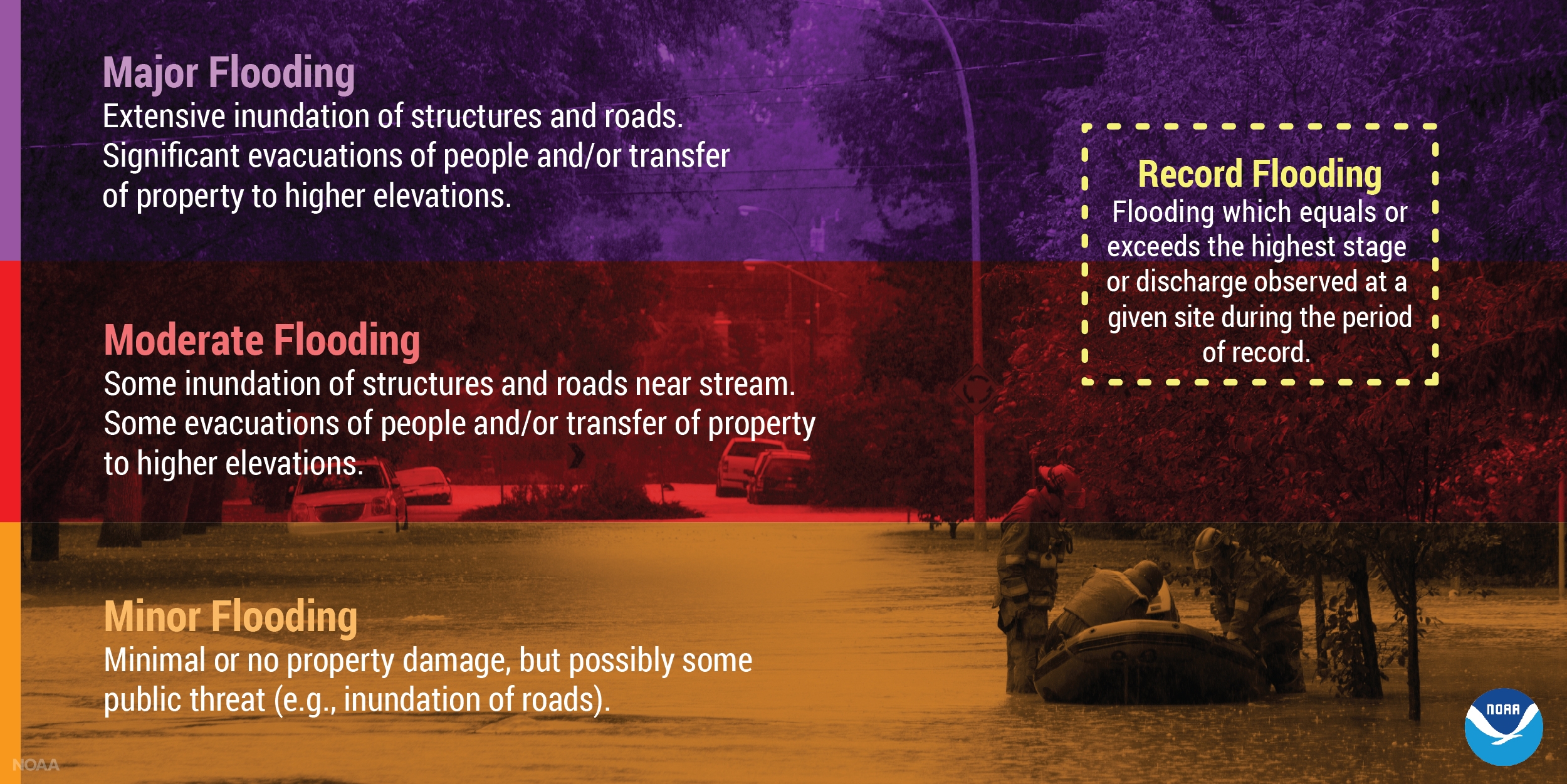NOAA Spring Flood Outlook: Historic Flooding to Continue Through May
Portions of the United States – especially in the upper Mississippi and Missouri River basins including Nebraska, Minnesota and Iowa – have already experienced record flooding this year. This early flooding was caused by rapid snow melt combined with heavy spring rain and late season snowfall in areas where soil moisture is high. In some areas, ice jams are exacerbating the flooding. Offices across the National Weather Service have been working with local communities, providing decision-support services and special briefings to emergency managers and other leaders in local, state and federal government to ensure the highest level of readiness before the flooding began.
Additional spring rain and melting snow will prolong and expand flooding, especially in the central and southern U.S. As this excess water flows downstream through the river basins, the flood threat will become worse and geographically more widespread.

“This outlook will help emergency managers and community decision-makers all along the nation’s major waterways prepare people and businesses for the flood threat,” said Neil Jacobs, Ph.D., NOAA’s acting administrator. “In addition to the safety aspects, our rivers are critical to the economic vitality of the nation, supporting commerce, recreation and transportation. NOAA forecasts and outlooks help people navigate extreme seasonal weather and water events to keep the country safe and moving forward.”
Spring Flood Risk Record winter precipitation across a large swath of the country has set the stage for the elevated flood risk. The upper Mississippi and Red River of the North basins have received rain and snow this spring up to 200 percent above normal.
https://twitter.com/NOAAComms/status/1108747170121945094The areas of greatest risk for moderate to major flooding include the upper, middle, and lower Mississippi River basins including the mainstem Mississippi River, Red River of the North, the Great Lakes, eastern Missouri River, lower Ohio, lower Cumberland, and Tennessee River basins.
Additionally, much of the U.S. east of the Mississippi River and portions of California and Nevada are at risk for minor flooding.

“The extensive flooding we’ve seen in the past two weeks will continue through May and become more dire and may be exacerbated in the coming weeks as the water flows downstream,” said Ed Clark, director of NOAA’s National Water Center in Tuscaloosa, Alabama. “This is shaping up to be a potentially unprecedented flood season, with more than 200 million people at risk for flooding in their communities.”
The flood risk outlook is based on a number of factors, including current conditions of snowpack, drought, soil moisture, frost depth, streamflow and precipitation. Local heavy rainfall, especially associated with thunderstorms, can occur throughout the spring and lead to flooding even in areas where overall risk is considered low. In the western U.S., snowpacks at higher elevations may continue to build over the next month, and the flood risk will depend on future precipitation and temperatures.Spring Outlook for Temperature, Precipitation and Drought Above-average rain and snow in California this winter has pulled the entire state out of its seven-year drought. Scattered areas of the Southwest, Southeast and Pacific Northwest are abnormally dry, but the worst drought conditions in the U.S. are in northern New Mexico. Springtime rain and melting of deep snowpack are favored to slightly improve the drought there. Drought will persist through spring in southern Alaska and Oregon, and may develop in Hawaii.
https://www.youtube.com/watch?v=_7nXBtnAQl0Above-average precipitation is favored from the Central Great Basin to the East Coast and in Alaska, compounding the flood risk for many states, especially in the Central and Northern Rockies and in the Southeast.
Warmer-than-average temperatures are forecast to extend from the Pacific Northwest to the Central Rockies, and from southern Texas, northward through the Great Lakes and eastward to encompass the entire East Coast. The greatest chance for above-average temperatures exist in Alaska, the Northeast and mid-Atlantic. The interior of the U.S. from the Dakotas southward to northern Texas are favored to have below-average temperatures this spring.
“Severe weather and flooding can strike anywhere, whether or not you are in a high risk area,” said Daniel Kaniewski, Ph.D., deputy administrator, Federal Emergency Management Agency. “Insurance is the first and best line of defense. Act now to make sure you have the right coverage for a flood by visiting floodsmart.gov, and don’t forget to download the FEMA mobile app to get real time weather alerts in your area.”
https://twitter.com/NWSCPC/status/1108751486119526406NOAA produces seasonal outlooks to help communities prepare for weather and environmental conditions that are likely during the coming months. Heavy rainfall at any time can lead to flooding, even in areas where overall risk is considered low.
Edited for WeatherNation by Meteorologist Mace Michaels